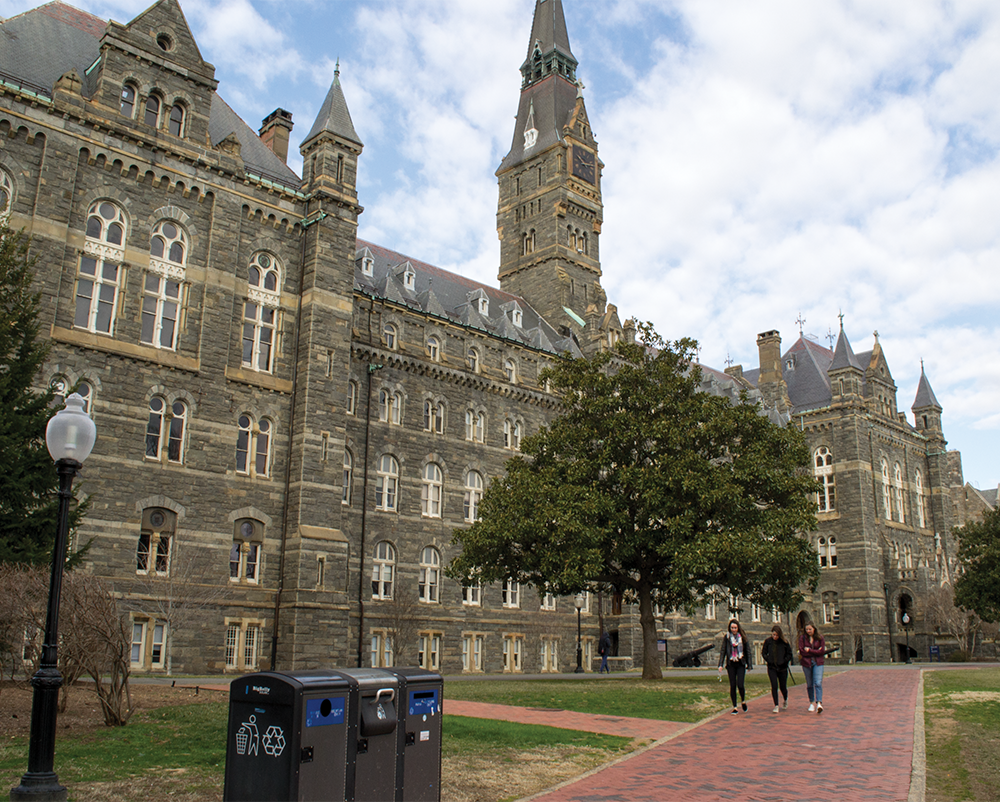The author of “The 272: The Families Who Were Enslaved and Sold to Build the American Catholic Church,” discussed Georgetown University’s history of enslavement and her experience writing the book at a book signing.
Rachel L. Swarns focused “The 272,” which was published in June, on Jesuit priests’ 1838 sale of 314 slaves to financially sustain Georgetown. The Oct. 5 event, which was hosted by Georgetown’s Center for the Study of Slavery and Its Legacies (CSSL), featured Adam Rothman, a history professor and the director of the CSSL. Rothman asked Swarns about the writing process behind her book and the subject matter in it. Afterward, Swarns answered questions from audience members and signed copies of the book.
Swarns, a journalism professor at New York University and a contributing reporter on race and race relations for The New York Times, began a series of investigative reports in January 2016 into Georgetown’s history with slavery, which sparked a nationwide discussion of reparations and the university’s role in slavery.
“The 272,” Swarns’ third book on Black history, was born from her investigative series.
Swarns said that the idea for the initial investigative series, which a colleague had forwarded to her, intrigued her because she wanted to expand on her research into the impacts of slavery. Swarns’ first book, “American Tapestry: The Story of the Black, White, and Multiracial Ancestors of Michelle Obama,” researched slavery’s effects on American families.
“I could see that this would allow me to do what seemed to me like the next step: explore how slavery shaped American institutions, especially an important elite American institution like Georgetown,” Swarns said at the event.
Swarns said that she decided to transform the article into a follow-up book, as she realized that the Catholic Church’s involvement in slavery extended beyond Georgetown’s sale, a finding that she personally connected to.
“Catholic priests bought and sold people,” Swarns said. “I happen to be Black and Catholic myself, and I had no idea. Historians knew about the history of Catholic slaveholding, but their stories had been largely left out of the origin story of the Catholic Church.”
“I wanted to know more about the priests and more about the families, and it seemed really urgent to me to tell this story,” Swarns added.
Swarns centered her story on chronicling 10 to 12 generations of the Mahoneys, one of the families Georgetown sold. She traced their history back to their matriarch, Ann Joice, an indentured servant who came to America in the 1600s but was forced into slavery. Joice told her narrative of enslavement to everyone who would listen, and her story was passed down through generations via word of mouth.

During the War of 1812, Joice’s descendant, Harry Mahoney, saved the Jesuits who ran St. Inigoes Tobacco Plantation in Maryland money by concealing it from the British troops. Filled with gratitude, the Jesuits rewarded Mahoney with the promise that he and his family would never be sold. However, the Jesuits broke this promise with the 1838 sale on Georgetown’s campus, which separated the members of the Mahoney family.
Some Mahoney descendants would later go on to establish Catholic parishes in New Orleans to serve Black communities.
Swarns said that she decided to use one family as the framework of her book not only because of the poignancy of the Mahoneys’ story, but because of the amount of information and historical documents available on them.
“The records on them were what I could find. If you’re writing about enslaved people, that is an enormous, enormous challenge,” Swarns said.
Several members of the Mahoney family and other descendants of the GU272+ filled a row at the event.
One of the Mahoney descendants who attended said that the information in Swarns’ book had inspired his family to look into their background more. As a result, they discovered another branch of their family that was sold in a separate trade of enslaved people by other Maryland Catholics.
“I want to thank you because you have lit a fire in corners that have had unanticipated consequences,” the descendant told Swarns.
Swarns said that, in her work on Black genealogy, she wants to leave Black readers with more accessible information about their families’ pasts and inspire them to look into it.
“I want to preach the gospel of genealogy because it’s so important for people to know family history. I think that surfacing these records and making them easily accessible to people has really inspired a lot of people to be able to connect the dots in some of these cases,” Swarns said.





















